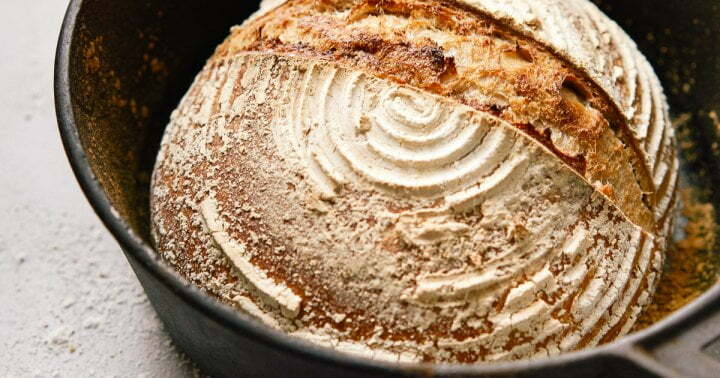3 Tips For Demystifying The Sourdough Process, From A Fermentation Expert

When we think of fermented foods and all their benefits, it’s usually kimchi and kombucha that come to mind—but the truth is many other enduring foods have their roots in fermentation. Chief among those? Wine, cheese, and bread—which is, incidentally, also the title of fermentation wiz Katie Quinn’s new book.
Within a few moments of (virtually) meeting her I knew it was going to be a great conversation—and I wasn’t let down. A veritable encyclopedia of the way fermentation, and these foods, are a part of global cuisine, we were off to the races with topics before I even got to the questions I had planned. And she has thoughts about the way one traditionally fermented food has been changed over the years:
“Gluten has gotten such a bad rap, but often it’s all of the different things that’s put in bread,” she told me, “The added yeast, the things that make it rise faster—so that bread is reacting to the industry of pumping out bread quickly.” But the traditional practices of bread making (like sourdough) are actually practices in a slow fermentation. “When we try to speed up fermentation, it reacts badly to our bodies,” she told me, “[Fermentation] predigests those elements of food that make it harder for us to digest.”
Fermentation (and all the science that goes with it) may seem intimidating—but that doesn’t have to be the case. And for Quinn, bread is actually the best entry-level fermenting project for anyone who wants to give it a try.
This article was originally published by mindbodygreen.com. Read the original article here.



